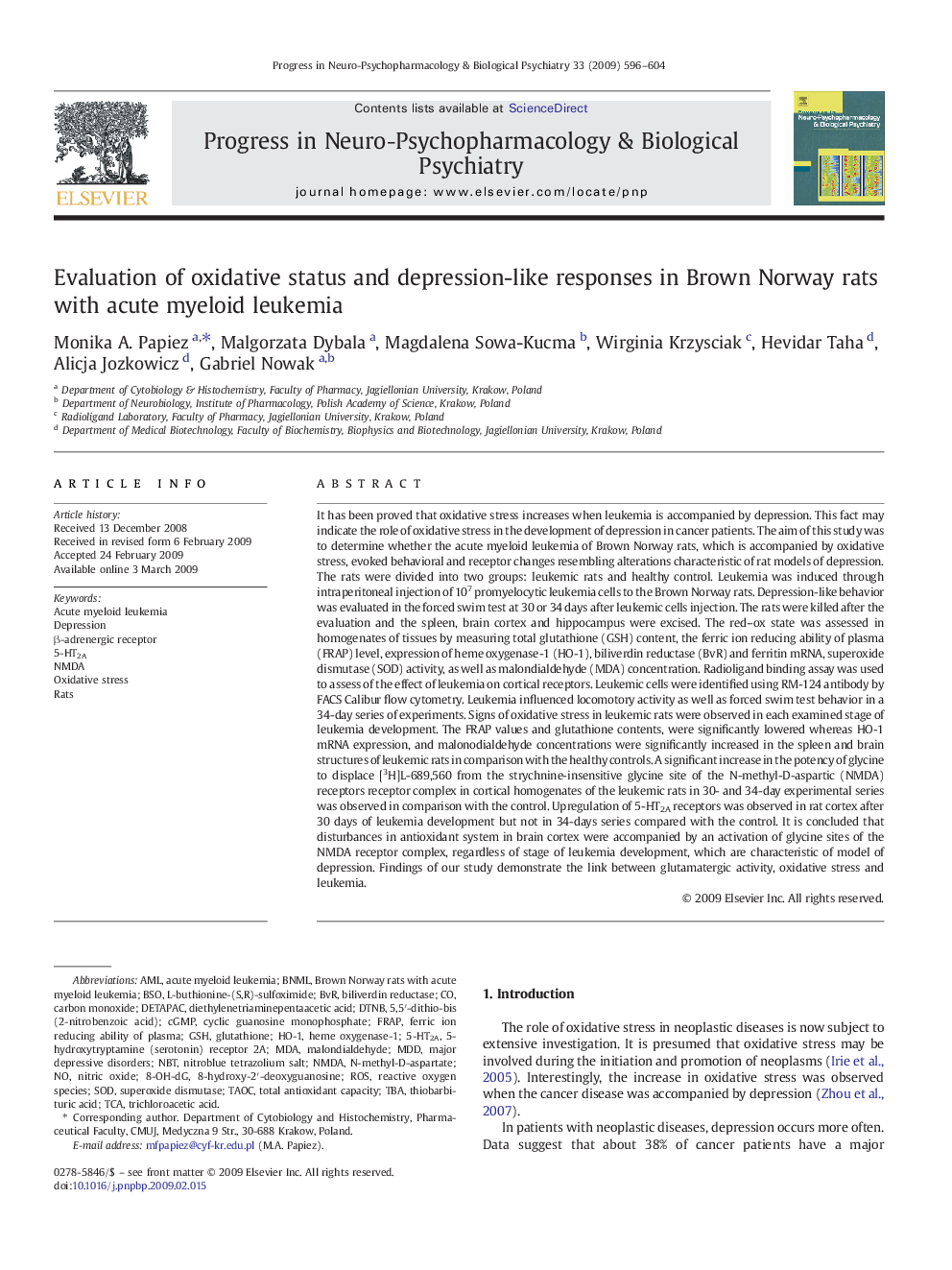| Article ID | Journal | Published Year | Pages | File Type |
|---|---|---|---|---|
| 2565966 | Progress in Neuro-Psychopharmacology and Biological Psychiatry | 2009 | 9 Pages |
It has been proved that oxidative stress increases when leukemia is accompanied by depression. This fact may indicate the role of oxidative stress in the development of depression in cancer patients. The aim of this study was to determine whether the acute myeloid leukemia of Brown Norway rats, which is accompanied by oxidative stress, evoked behavioral and receptor changes resembling alterations characteristic of rat models of depression. The rats were divided into two groups: leukemic rats and healthy control. Leukemia was induced through intraperitoneal injection of 107 promyelocytic leukemia cells to the Brown Norway rats. Depression-like behavior was evaluated in the forced swim test at 30 or 34 days after leukemic cells injection. The rats were killed after the evaluation and the spleen, brain cortex and hippocampus were excised. The red–ox state was assessed in homogenates of tissues by measuring total glutathione (GSH) content, the ferric ion reducing ability of plasma (FRAP) level, expression of heme oxygenase-1 (HO-1), biliverdin reductase (BvR) and ferritin mRNA, superoxide dismutase (SOD) activity, as well as malondialdehyde (MDA) concentration. Radioligand binding assay was used to assess of the effect of leukemia on cortical receptors. Leukemic cells were identified using RM-124 antibody by FACS Calibur flow cytometry. Leukemia influenced locomotory activity as well as forced swim test behavior in a 34-day series of experiments. Signs of oxidative stress in leukemic rats were observed in each examined stage of leukemia development. The FRAP values and glutathione contents, were significantly lowered whereas HO-1 mRNA expression, and malonodialdehyde concentrations were significantly increased in the spleen and brain structures of leukemic rats in comparison with the healthy controls. A significant increase in the potency of glycine to displace [3H]L-689,560 from the strychnine-insensitive glycine site of the N-methyl-D-aspartic (NMDA) receptors receptor complex in cortical homogenates of the leukemic rats in 30- and 34-day experimental series was observed in comparison with the control. Upregulation of 5-HT2A receptors was observed in rat cortex after 30 days of leukemia development but not in 34-days series compared with the control. It is concluded that disturbances in antioxidant system in brain cortex were accompanied by an activation of glycine sites of the NMDA receptor complex, regardless of stage of leukemia development, which are characteristic of model of depression. Findings of our study demonstrate the link between glutamatergic activity, oxidative stress and leukemia.
